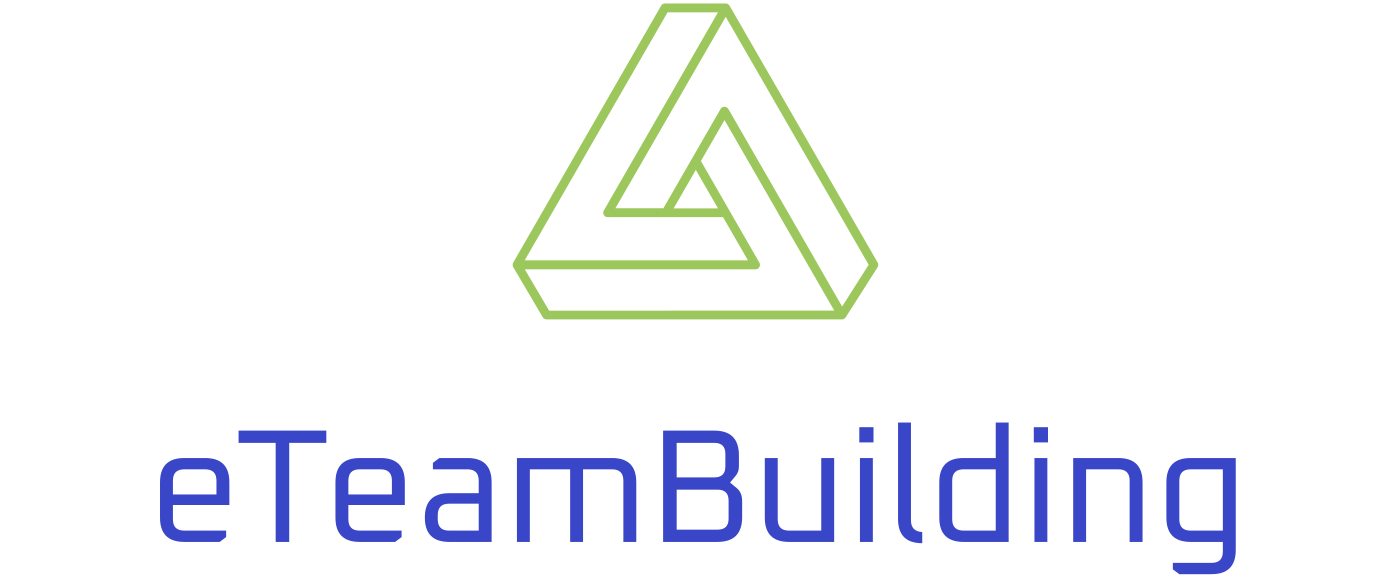Let us hit you with some valuable stats, to begin with.
- 86% of employees and executives cite a lack of collaboration or ineffective communication for workplace failures. (Salesforce.com)
- 97% of employees and executives think that a lack of alignment within a team impacts the outcome of a task or project. (Hypercontext.com)
- 75% of such teams are dysfunctional and fail to meet at least three of the following five criteria: meeting a planned budget, staying on schedule, adhering to specifications, meeting customer expectations, and maintaining alignment with the company’s corporate goals. (Hbr.org)
Cross-team collaboration is essential for companies that wish to thrive. In today’s article, we will tackle the whole thing: cross-team collaboration, its benefits, challenges, strategies for implementation, and tools to use and make your lives easier.
What is cross-team collaboration?
Cross-team collaboration is also known as cross-functional collaboration or cross-departmental collaboration. Even if the first phrase is the most commonly used and general term, all three phrases convey the same meaning.
In essence, cross-team collaboration entails bringing together individuals with diverse skill sets and knowledge from various departments or functional areas to achieve a common objective and deliver greater value to the organization than they would achieve working in silos. The team could be assembled to complete a short-term project, such as creating a website from scratch, or a long-term business function that spans over a certain period, like increasing inbound leads.
What’s the difference between ‘team collaboration’ and ‘cross-team collaboration’?

As a manager, you may be accustomed to collaborating with your team in a familiar setting. However, when working with a cross-functional team, there are a few key aspects to keep in mind.
- Firstly, conventional departments are usually structured based on staff experience levels, but cross-functional teams may naturally form with members from various departments to cover a wider range of skills. While single-function teams may have members with differing levels of experience, most members generally work at the same level. In contrast, a cross-functional team may have a more junior team member leading a group that includes more experienced members.
- Secondly, when people from different parts of a business collaborate, they can challenge conventional methods and introduce new ideas and techniques that may lead to previously unattainable outcomes. The varied perspectives can offer a more comprehensive range of solutions.
- Finally, cross-functional teams often bypass the usual approval processes and present their work directly to higher-level decision-makers. With multiple departments involved, problem-solving tends to be more robust, and teams can catch mistakes earlier in the work process.
Let’s make things clearer by presenting some examples of cross-team collaboration:
- Customer service and product development teams can collaborate to improve product offerings. Customer service representatives can share customer feedback with the product development team to inform future product releases and improve current offerings.
- HR and IT teams can work together to build or buy solutions that meet the needs of a growing workforce. For example, they can create a talent management system to manage the talent pipeline and upskill employees, or implement an intranet solution to ensure that all employees across departments are on the same page.
- Sales and marketing teams can work together to generate more value for the company. By leveraging the insights that sales teams gain from direct interactions with customers, marketing can attract more prospects.
What are the potential obstacles in cross-team collaboration?
There are several common pitfalls that should be addressed to prevent issues from arising when it comes to cross-team collaboration. One helpful framework to consider is ‘The Five Dysfunctions of a Team’ theory, which can identify potential weaknesses before work begins.
- Communication can be particularly challenging when working with remote or distributed teams, but using the right tools can help alleviate this issue. More on that later in the article.
- In addition, team members may struggle with balancing new responsibilities with their usual duties, leading to a lack of commitment. If team members are not confident in each other’s commitment levels, enthusiasm and efficacy may suffer.
- Another obstacle to cross-functional collaboration is a lack of trust among team members who may not have worked together before. It can be challenging to build camaraderie and trust when expectations of each other’s abilities are unknown.
- Another issue is a fear of conflict, which can lead to groupthink or unnecessary confrontation if miscommunication occurs.
- Furthermore, if communication problems persist, individuals may be more likely to blame poor performance on people they don’t have a working relationship with, leading to a lack of accountability.
- Finally, cross-functional teams must focus on the bigger picture to achieve success. Overemphasis on individual tasks can lead to inattention to results and a lack of collaboration among team members.
Strategies for creating and improving cross-team collaboration
1. Put your finger on existing problems
It is essential to identify existing problems (or potential ones early on) to avoid derailing cross-functional teams. By doing so, managers can save time, money, and resources. It also rewards them with teams that can achieve measurable impact.
2. Make up your team
What skills do you need? Once you answer that question, make sure you select some team members who rock those skills, including a combination of doers and organizers.
3. Choose a leader
In cross-functional teams, there can be several leaders vying for the top spot, which can cause confusion. Therefore, create leadership guidelines from the start to clarify decision-making and communication channels. Also, make sure that the leader you choose is comfortable assigning tasks to more experienced team members. This approach helps the team make decisions as a collective and ensures a positive workflow.
4. Delegate team responsibilities
Team members value the opportunity to work with others and collaborate on projects. According to a survey conducted by Queens University of Charlotte, nearly 75% of employees consider collaboration as ‘very important’ to their job. However, not providing a clear and transparent space for employees to understand their own workloads and the duties of their colleagues can lead to bottlenecks and inefficiencies.
The first step in creating a collaborative and cohesive environment is to clearly define each team’s responsibilities, their decision-making authority, and the tasks that should be delegated to other teams. This helps each department to understand their role in the bigger picture and empowers them to take control of their own responsibilities.
Project managers must also be vigilant about unfair workloads and tasks across the team. Tasks that were initially expected to take just a few hours can easily turn into a week-long job, leading to bottlenecks or unfairness for the person assigned to it.
5. Set your goals
Effective project management requires strong leadership and a clear sense of direction. A focused approach is crucial when setting the conditions for successful collaboration in the workplace.
Start a project by identifying the shared challenges the company is facing and gathering input from all teams involved. Once everyone agrees on the issues that require a solution, set collaboration goals and objectives for achieving them. It is essential to ensure that the objectives tie directly to the problems and larger company goals.
6. Create KPIs

Clear KPIs are a valuable tool for encouraging constructive collaboration between teams. For example, when working as a marketing director, you might find yourself partly responsible for the leads that were being dropped by the sales team. To address that issue, you could establish clear KPIs that both teams agree on and which hold you accountable for ‘your side of the street’. Both teams could then check in monthly and report on the specific numbers they are responsible for.
With clarity about who is responsible for what, clear check-in times, and specific goals, cross-team collaboration becomes more productive.
7. Consolidate communication channels
It’s important to centralize communication channels to promote effective collaboration. Using different tools and platforms can cause confusion and hinder productivity, especially when working with external parties. A versatile platform that streamlines all communication channels, such as Slack, Microsoft Teams, or Zoom, can be particularly helpful for daily use.
8. Establish a transparent decision-making process
A clear decision-making process is crucial for accountability and team buy-in. Team members should know what decisions they can make independently and who to report to for a second opinion. Guidelines can be set to steer the group’s thinking on more complex decisions and to prioritize common goals, such as customer experience.
9. Create a team charter
Introducing a team charter is a great way to foster inter-departmental teamwork, especially when joining a new team or company. It provides context for your team’s goals and opens up the conversation for future projects and collaboration. The charter should cover the team’s mission and objectives, team roles, and expectations for effective collaboration.
10. Establish a timeline
As a manager, it’s essential to consider the workload of your employees before assigning them to a project. Even if they express interest, they may not have the availability to take on the extra responsibility without compromising their core duties. Without a clear timeline, the project may experience significant delays or never get completed at all.
To avoid this, it’s important to estimate the project timeline and the time commitment required from each team member before assigning them to the project. By doing so, you can provide employees with a clear understanding of the project’s requirements and the time needed to complete it. This will allow them to assess their availability and ensure they can commit to the project. As a result, you can ensure the project is completed on time and without causing undue stress on your team members.
11. Maximize the effectiveness of meetings
To avoid wasting time, establish a clear agenda for meetings and ensure that remote workers can join in seamlessly. It’s also important to consider different time zones when scheduling meetings. Utilize tools that allow everyone to participate regardless of their location.
12. Encourage collaborative behavior
To encourage teamwork, it’s essential to acknowledge and reward positive behaviors. Rather than basing incentives solely on the goals of individual departments, set goals that benefit the entire system. Learn from successes and failures to improve teamwork and increase project success rates.
13. Offer your people the right resources to thrive
When collaborating across different teams, it’s important to create a shared understanding of each team’s role and responsibilities. To achieve this, consider developing a handbook or supporting documentation that outlines the workflows, standard operating procedures, project timelines, task dependencies, document storage, communication channels, and end goals for each team.
Encourage team members to contribute their own insights and experiences to the handbook, fostering a collaborative end result. This can help everyone involved to learn from each other and gain a better understanding of the wider ecosystem.
14. Cultivate creativity
Creative problem-solving is vital to the success of any organization. That is why it’s also one of the main team building objectives. To promote creativity, foster a company culture that encourages employees to share their ideas in a collaborative environment. Regular brainstorming sessions and team building activities can help bring the team together.
15. Dare to experiment
It’s important to recognize that every team and organization is unique, so what works for others may not work for you. Experimenting with new strategies can yield positive results, even if they only have a short-term impact on your teams. Don’t hesitate to try out ideas, especially if they originate from within your team.
16. Build unity

To foster a sense of unity within the team, team building activities are essential. These activities can help to break down communication barriers and build stronger relationships among team members.
Even remote teams can participate in virtual team building activities! Check out some of our best ideas:
- Best Icebreaker Questions for Virtual Meetings
- Virtual Happy Hour: Games, Ideas & Activities For 2023
- 12 Easy Virtual Employee Engagement Activities
Keep everyone connected and benefit from better cross-team communication and increased productivity!
Tools for cross-team collaboration
Collaboration tools are essential for effective cross-team collaboration in the modern workplace. To fully leverage their potential, managers should consider incorporating these tools into their team’s workflow. This means adjusting the team’s processes to take full advantage of the tools, which are designed to connect team members and increase productivity.
Choose your tools wisely
Consider adapting your current processes to take advantage of the benefits these tools offer, such as connecting team members and ensuring they work more efficiently together.
For instance, you could introduce a chat tool like Slack for real-time and asynchronous communication between team members. Similarly, using video-conferencing software like Zoom for scheduled meetings can help to bridge geographical distances and bring team members closer together.
Google Drive is a popular file-sharing platform that allows you to grant varying levels of access to files and folders, as well as to link directly to files when communicating through Slack. Collaborating on files within Drive ensures that your team is always working on the latest version and streamlines the collaboration process.
Finally, consider using project management tools like Asana or Trello to keep projects on track. By assigning tasks to team members and checking progress on these tools, you can save time on reporting and stay up to date on project developments. A quick glance at the dashboard will help you identify areas that require your attention and ensure that you’re always in the loop.
Use them at their full potential
It’s important to ensure that the online tools you deploy are being used to their full potential. However, people can be resistant to change and may continue to rely on old habits like email. It’s important to remember that these online collaboration tools were chosen for a reason – to improve team communication and productivity, especially for remote team members.
To avoid the problems that led you to seek out these tools in the first place, it’s crucial that you encourage (or even require) all team members to use them. You can motivate them by emphasizing that information outside of these tools doesn’t exist. Most of these tools are user-friendly and require little to no training, making adoption easier. If team members are still struggling, offer help resources or a one-on-one refresher to ensure that everyone is comfortable with the tools and taking full advantage of their benefits.
Use them for fun activities as well
As a manager, it’s important to recognize that your team needs a break from work every now and then. But you don’t need to plan a long vacation to make that happen. Instead, consider using your collaboration tools for some fun activities that the team can enjoy together.
For example, you could use your communication, file-sharing, and project management tools to plan a work event, such as an office party or team outing. By creating a channel in Slack or using other tools like Google Drive or Trello, you can assign tasks to team members, brainstorm ideas, and keep everything organized.
This approach has several benefits. First, it gives team members a much-needed break from their regular work activities. Second, it encourages the team to use the tools in a more personal and fun way, making them more familiar with them. And finally, it fosters collaboration and teamwork, which can carry over into other collaborative activities and projects. So go ahead and plan that fun work event – your team will thank you for it!
The benefits of cross-team collaboration
Here is why you should implement cross-team collaboration asap and make sure it runs smoothly:
- Increased engagement and team spirit: Collaborating across teams can foster positive working relationships and lead to more engaged and satisfied team members.
- Retention of top talent: By promoting collaboration and teamwork, leadership can create an environment that retains top talent and attracts new employees.
- Improved innovation and creativity: Collaboration can spark new ideas and lead to more innovative and creative solutions.
- Skill development: Working with other team members can provide opportunities for skill development and learning from others.
- Comprehensive results: Collaborating with multiple departments ensures a more thorough approach to problem-solving and a wider range of expertise.
- Faster project progress: Teams with a shared vision and goal can work together more efficiently, leading to faster project progress.
- Stronger connection to the company: Successful collaboration can help employees feel more connected to the business and committed to its success.
- Satisfied stakeholders: Collaborating across teams can lead to better results that satisfy stakeholders and clients.













